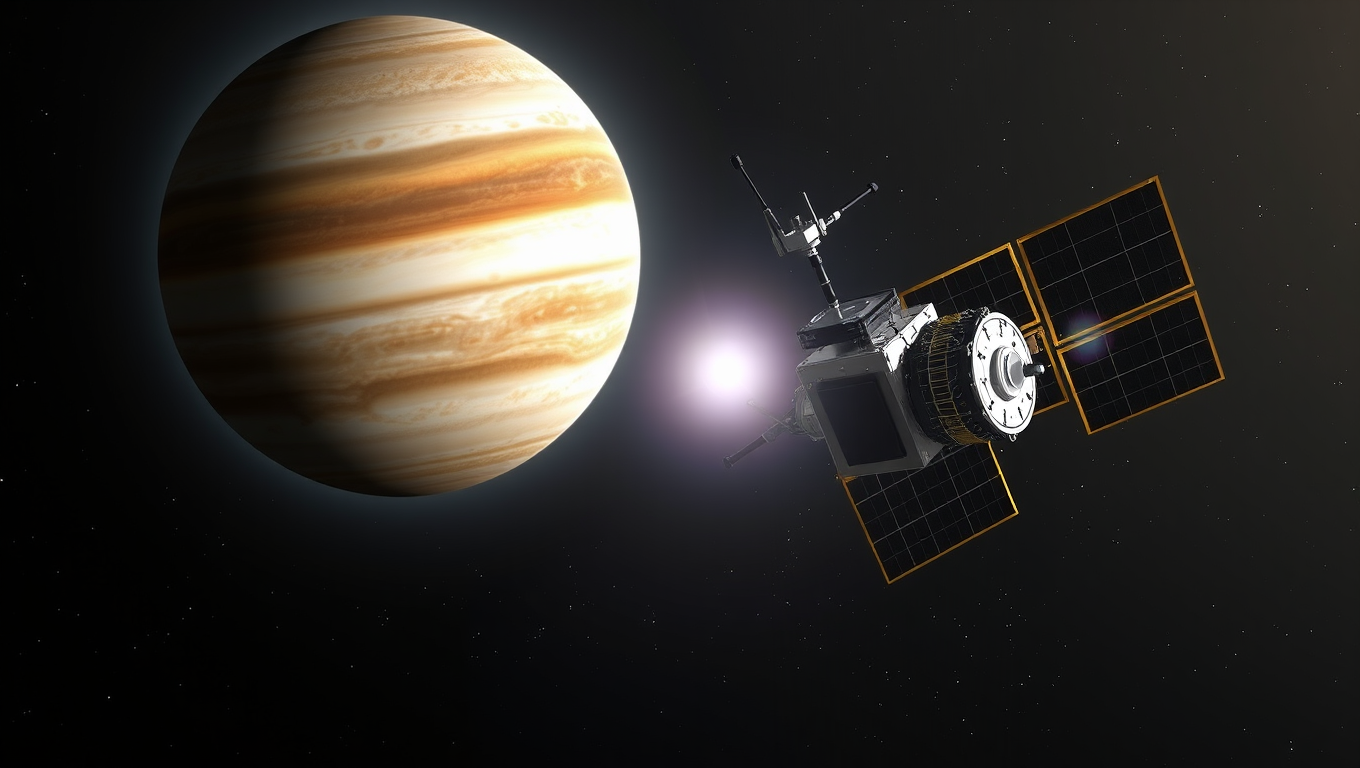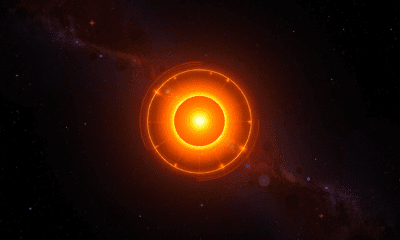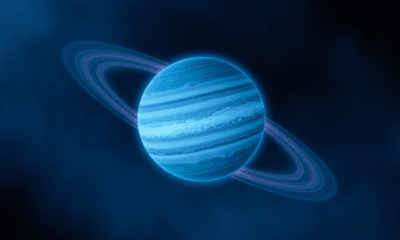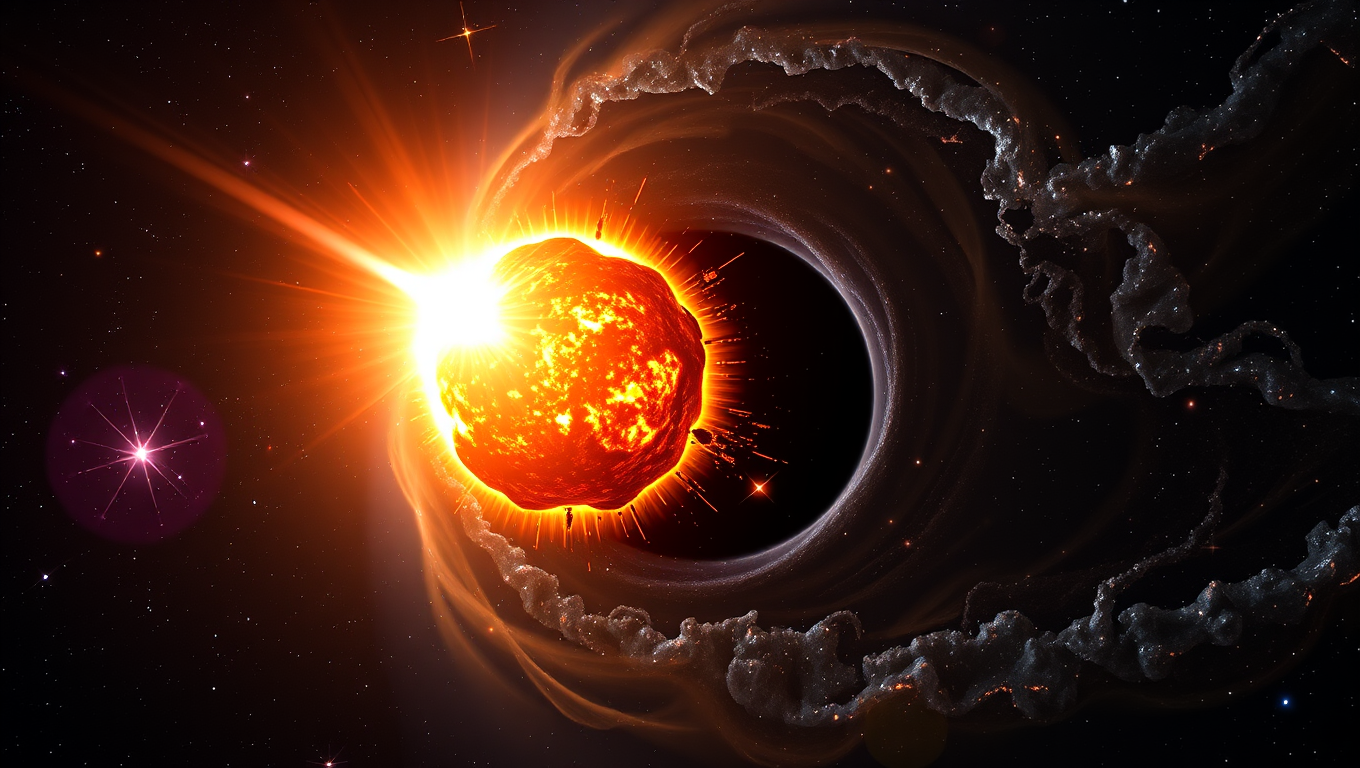While we try to keep things accurate, this content is part of an ongoing experiment and may not always be reliable.
Please double-check important details — we’re not responsible for how the information is used.
Black Holes
Radar on NASA’s Europa Clipper Mission Successfully Conducts First Big Test
NASA’s Europa Clipper spacecraft just aced a key radar test while flying past Mars, proving its ability to detect structures beneath planetary surfaces—something that couldn’t be tested on Earth. The radar, known as REASON, will eventually be used to explore Europa, an icy moon of Jupiter believed to harbor a subsurface ocean.

Astrophysics
Harnessing the Power of Black Holes: A Tiny Spacecraft’s Quest to Rewrite Physics
A visionary plan proposes sending a paperclip-sized spacecraft, powered by Earth-based lasers, to a nearby black hole within a century. Led by astrophysicist Cosimo Bambi, the mission would test the limits of general relativity and explore the mysteries of event horizons. While current technology can t yet achieve it, advancements in nanocraft design, laser propulsion, and black hole detection could make the journey possible within decades, potentially rewriting the laws of physics as we know them.
Astrophysics
A Star’s Second Act: Uncovering the Secrets of Black Hole Encounters
This is the first confirmed case of a star that survived an encounter with a supermassive black hole and came back for more. This discovery upends conventional wisdom about such tidal disruption events and suggests that these spectacular flares may be just the opening act in a longer, more complex story.
Asteroids, Comets and Meteors
The Music of Black Holes: Scientists Uncover a Hidden Harmony
Using a powerful mathematical tool, scientists have unveiled the intricate “ringing” of black holes, unlocking patterns missed for decades and laying the groundwork for sharper gravitational wave measurements.
-

 Detectors7 months ago
Detectors7 months agoA New Horizon for Vision: How Gold Nanoparticles May Restore People’s Sight
-

 Earth & Climate9 months ago
Earth & Climate9 months agoRetiring Abroad Can Be Lonely Business
-

 Cancer8 months ago
Cancer8 months agoRevolutionizing Quantum Communication: Direct Connections Between Multiple Processors
-

 Albert Einstein9 months ago
Albert Einstein9 months agoHarnessing Water Waves: A Breakthrough in Controlling Floating Objects
-

 Earth & Climate8 months ago
Earth & Climate8 months agoHousehold Electricity Three Times More Expensive Than Upcoming ‘Eco-Friendly’ Aviation E-Fuels, Study Reveals
-

 Diseases and Conditions9 months ago
Diseases and Conditions9 months agoReducing Falls Among Elderly Women with Polypharmacy through Exercise Intervention
-

 Chemistry8 months ago
Chemistry8 months ago“Unveiling Hidden Patterns: A New Twist on Interference Phenomena”
-

 Agriculture and Food8 months ago
Agriculture and Food8 months ago“A Sustainable Solution: Researchers Create Hybrid Cheese with 25% Pea Protein”





























